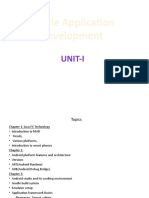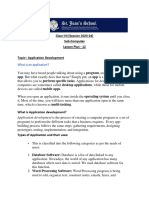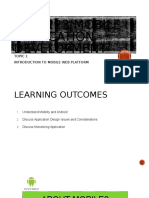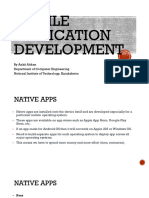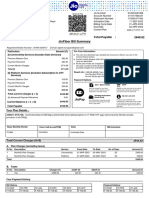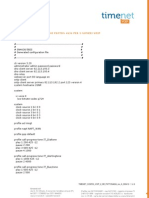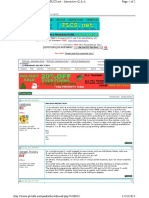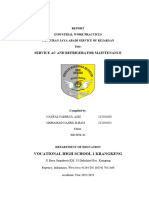0% found this document useful (0 votes)
32 views22 pagesUnit 1
The document outlines the fundamentals of mobile and web application development, covering various types of applications such as native, hybrid, and cross-platform apps. It discusses the architecture of web applications, the development process for mobile apps, and the tools and frameworks used in each type of development. Additionally, it highlights the advantages and disadvantages of different app development approaches, emphasizing the importance of user experience and performance.
Uploaded by
Amy Rubina LawrenceCopyright
© © All Rights Reserved
We take content rights seriously. If you suspect this is your content, claim it here.
Available Formats
Download as PDF, TXT or read online on Scribd
0% found this document useful (0 votes)
32 views22 pagesUnit 1
The document outlines the fundamentals of mobile and web application development, covering various types of applications such as native, hybrid, and cross-platform apps. It discusses the architecture of web applications, the development process for mobile apps, and the tools and frameworks used in each type of development. Additionally, it highlights the advantages and disadvantages of different app development approaches, emphasizing the importance of user experience and performance.
Uploaded by
Amy Rubina LawrenceCopyright
© © All Rights Reserved
We take content rights seriously. If you suspect this is your content, claim it here.
Available Formats
Download as PDF, TXT or read online on Scribd
/ 22
























